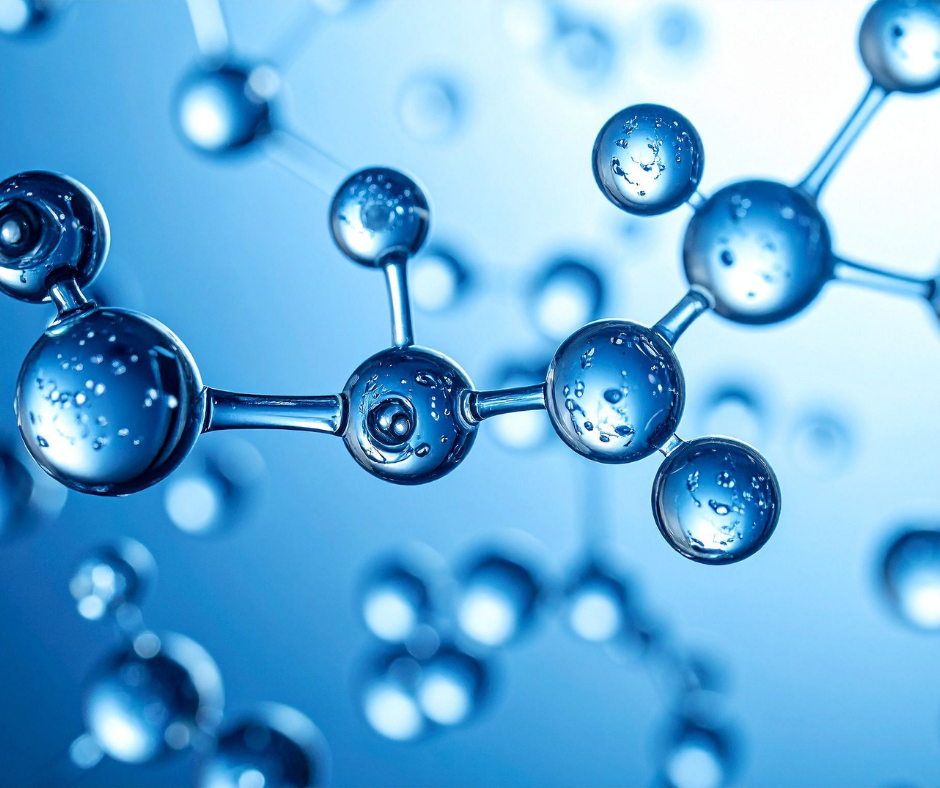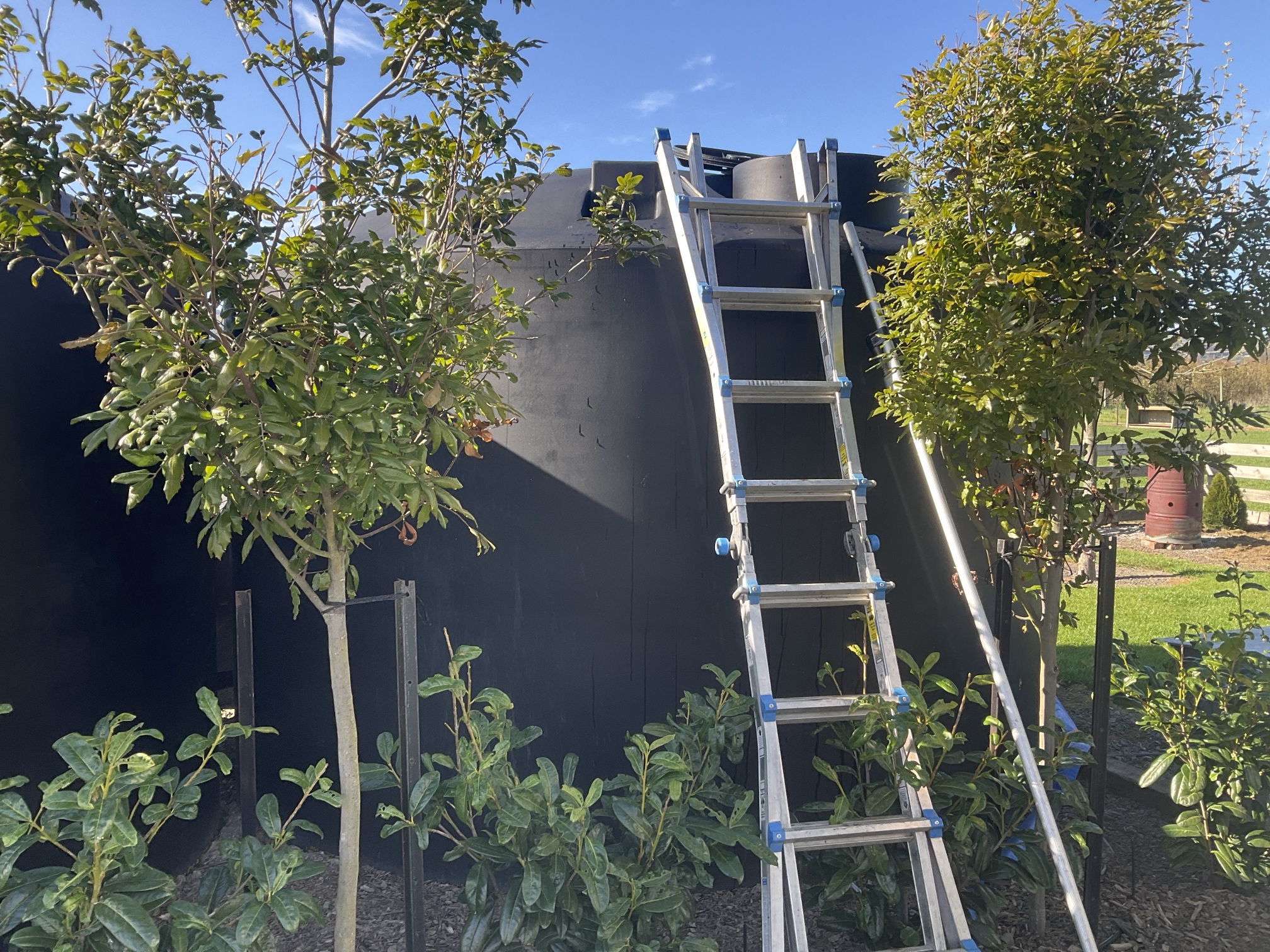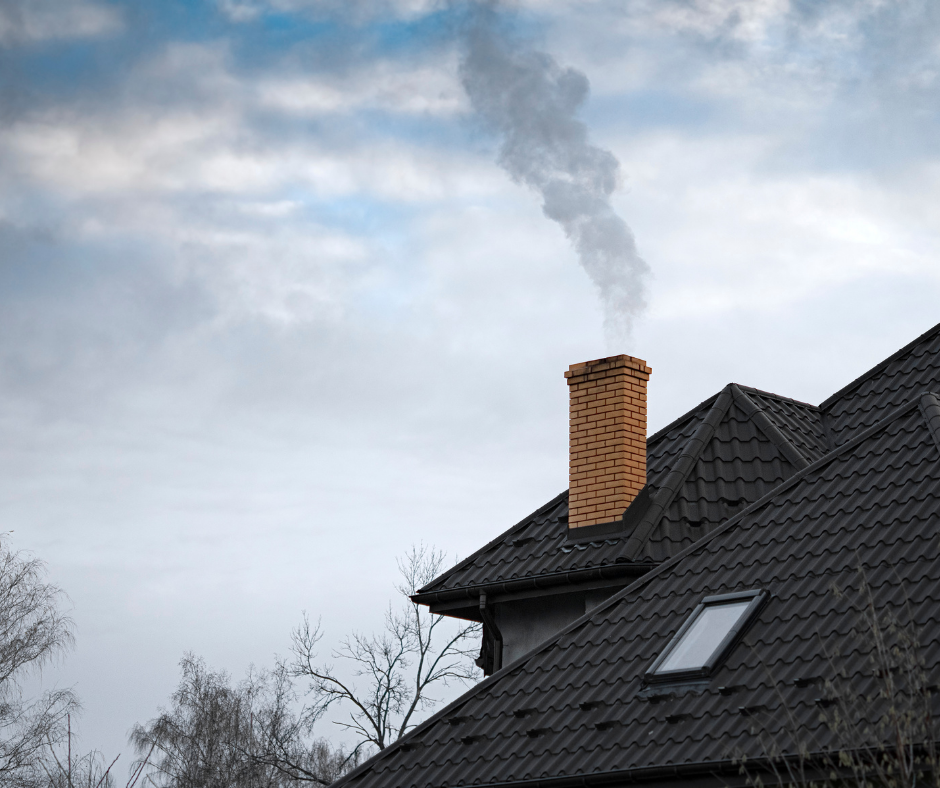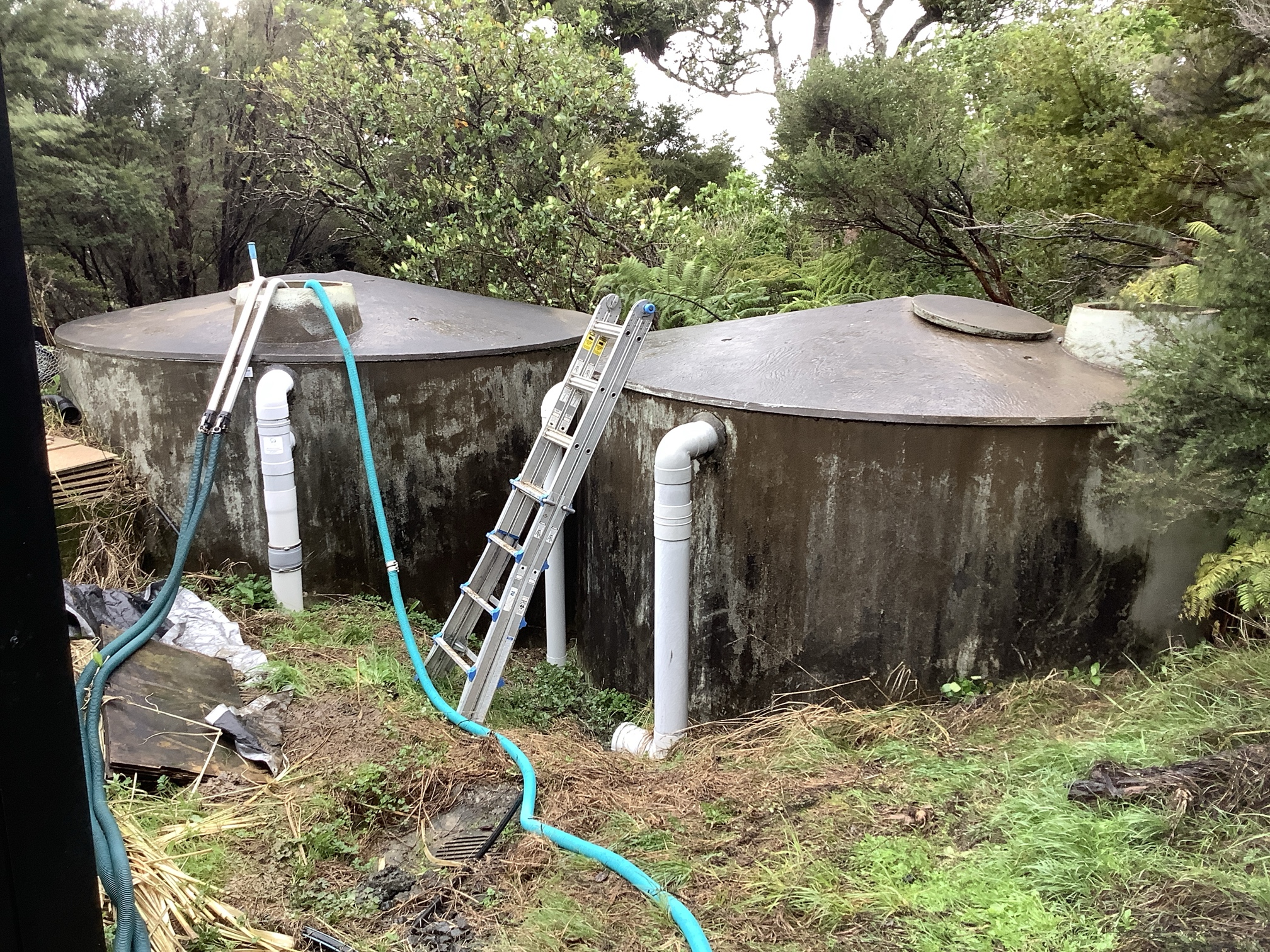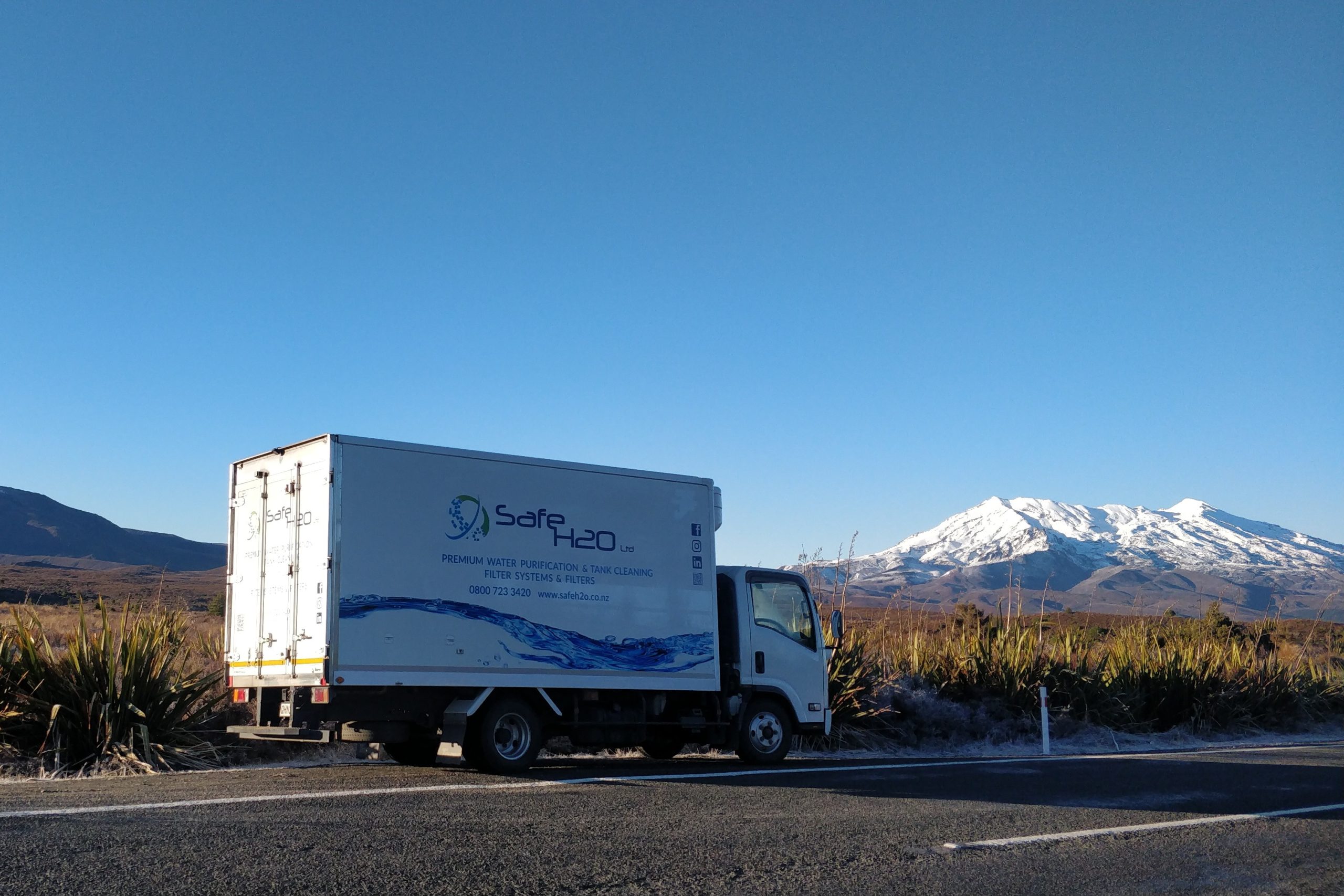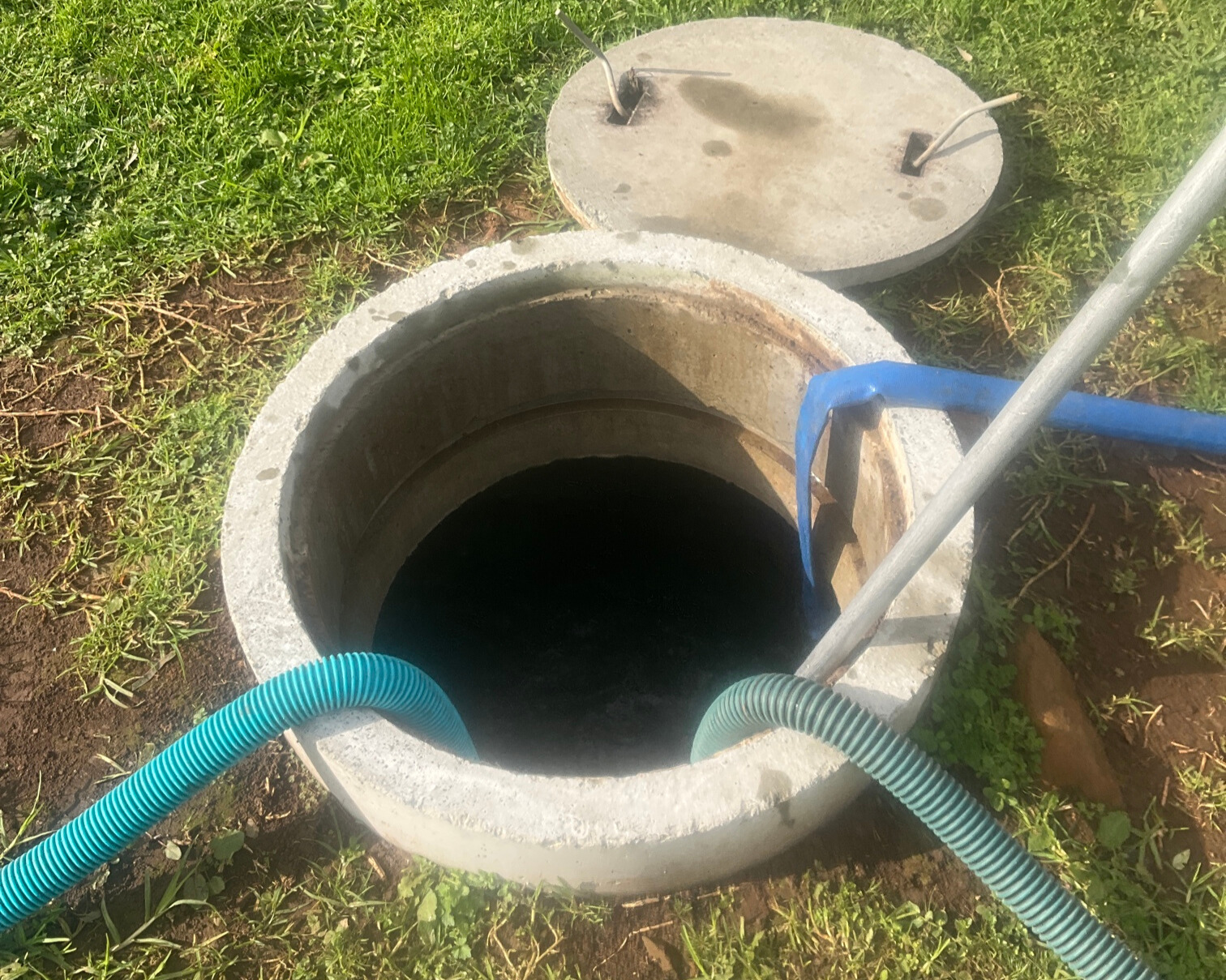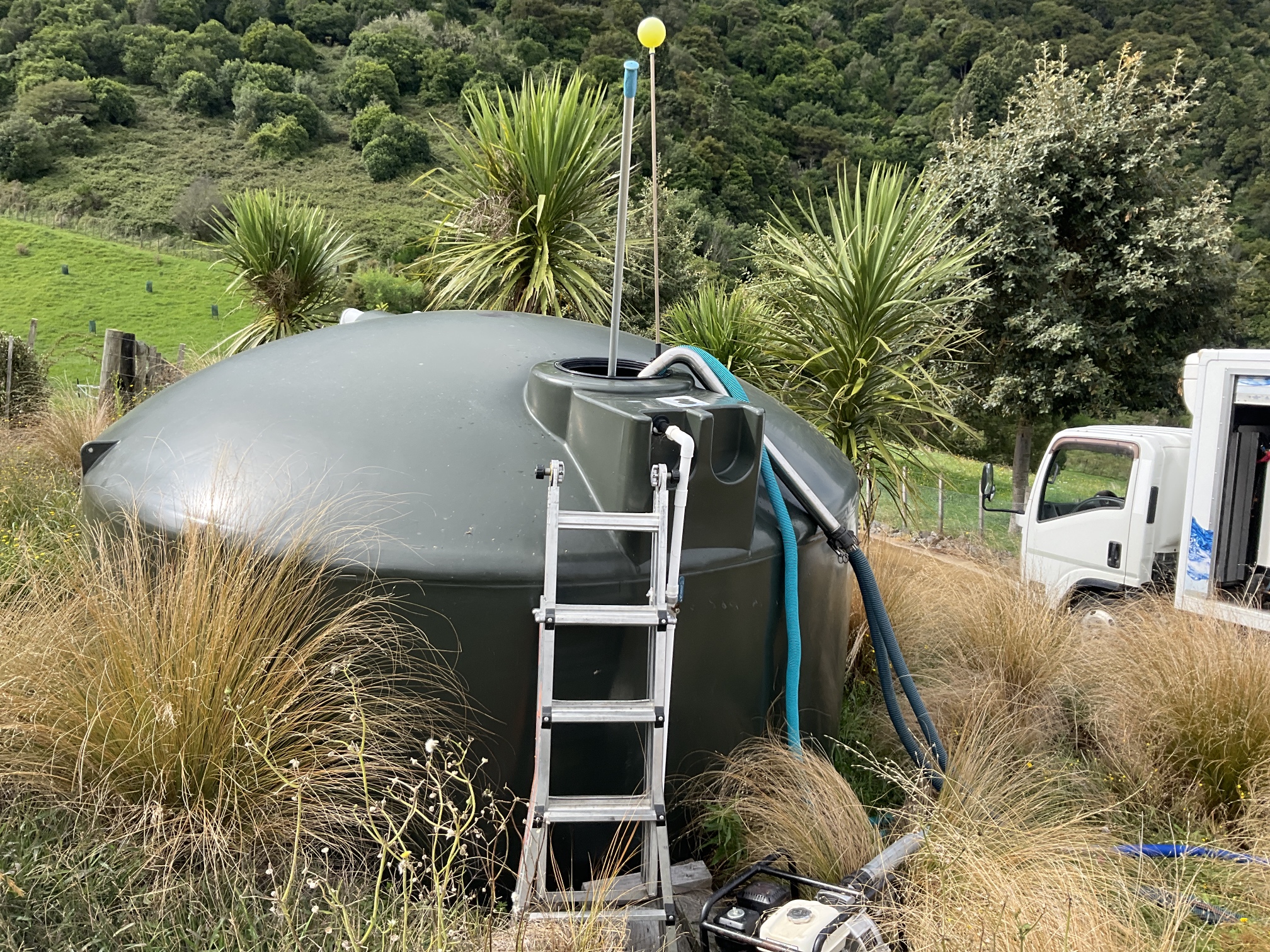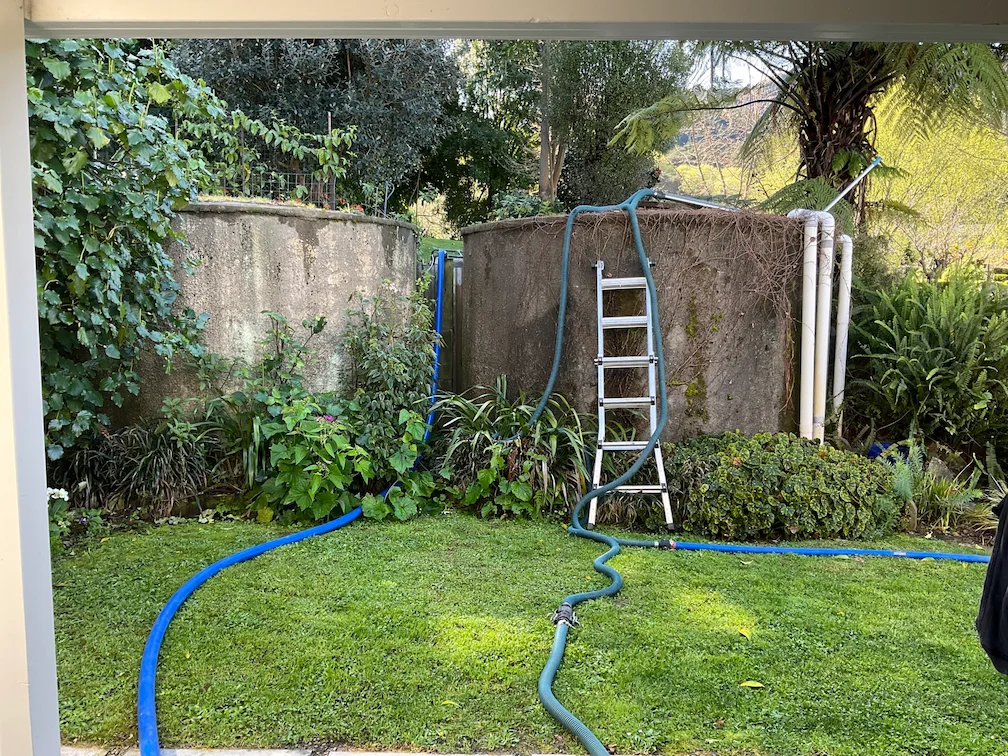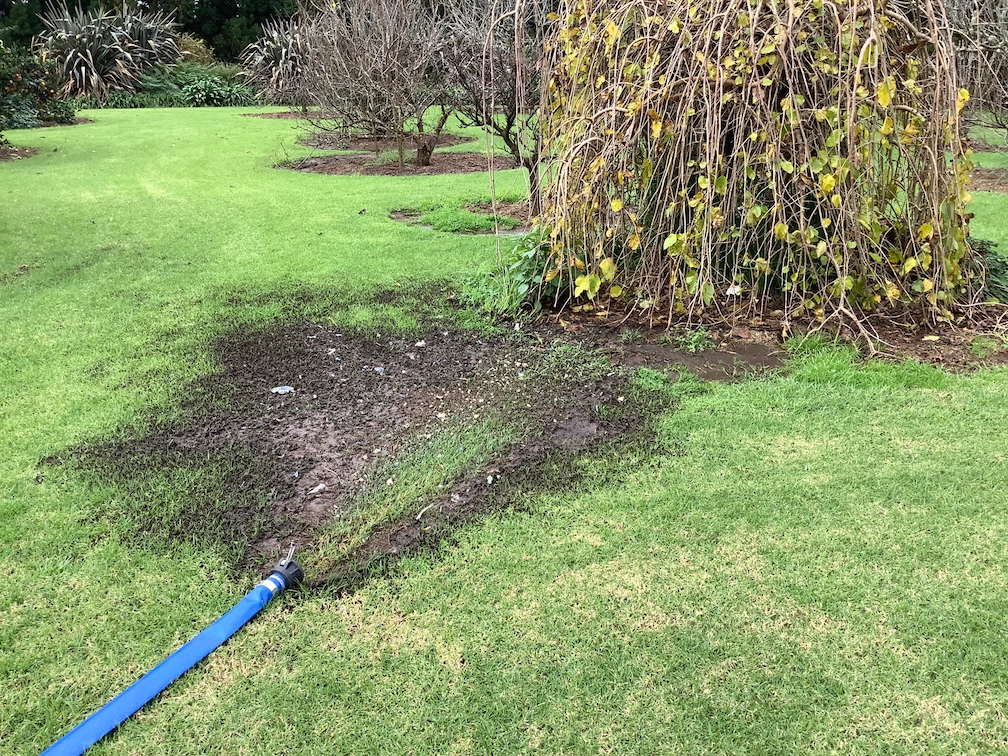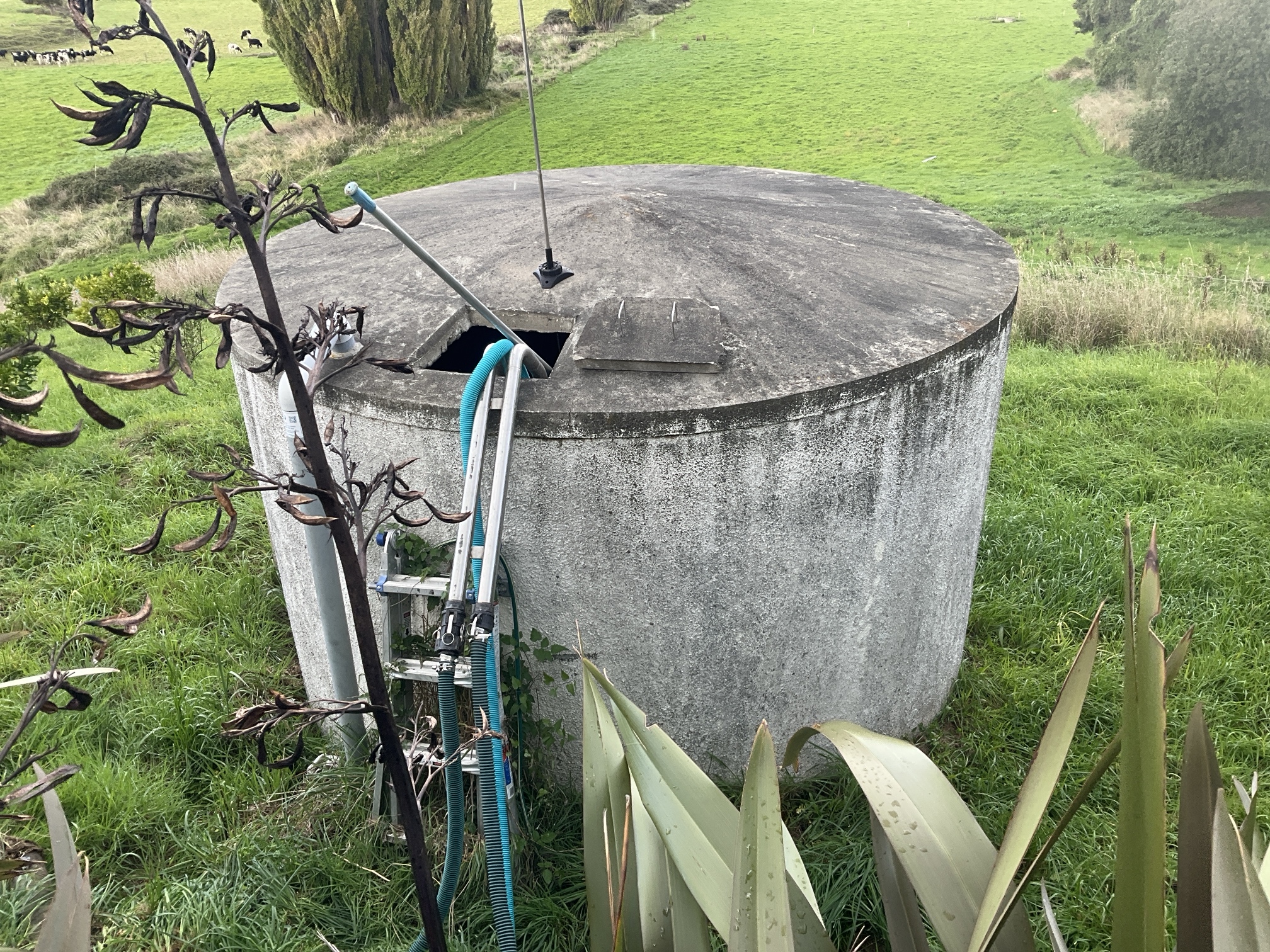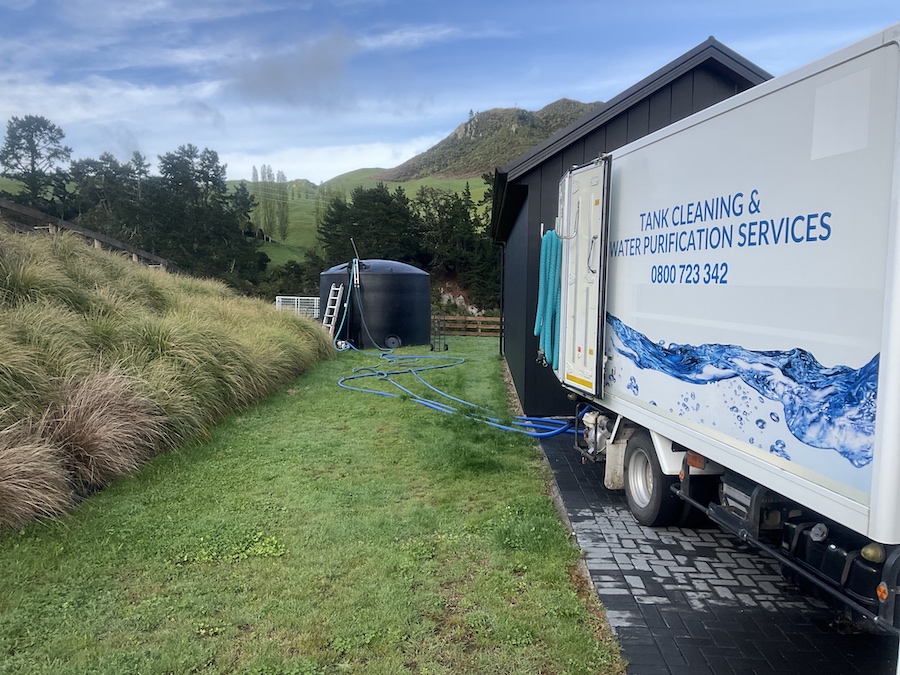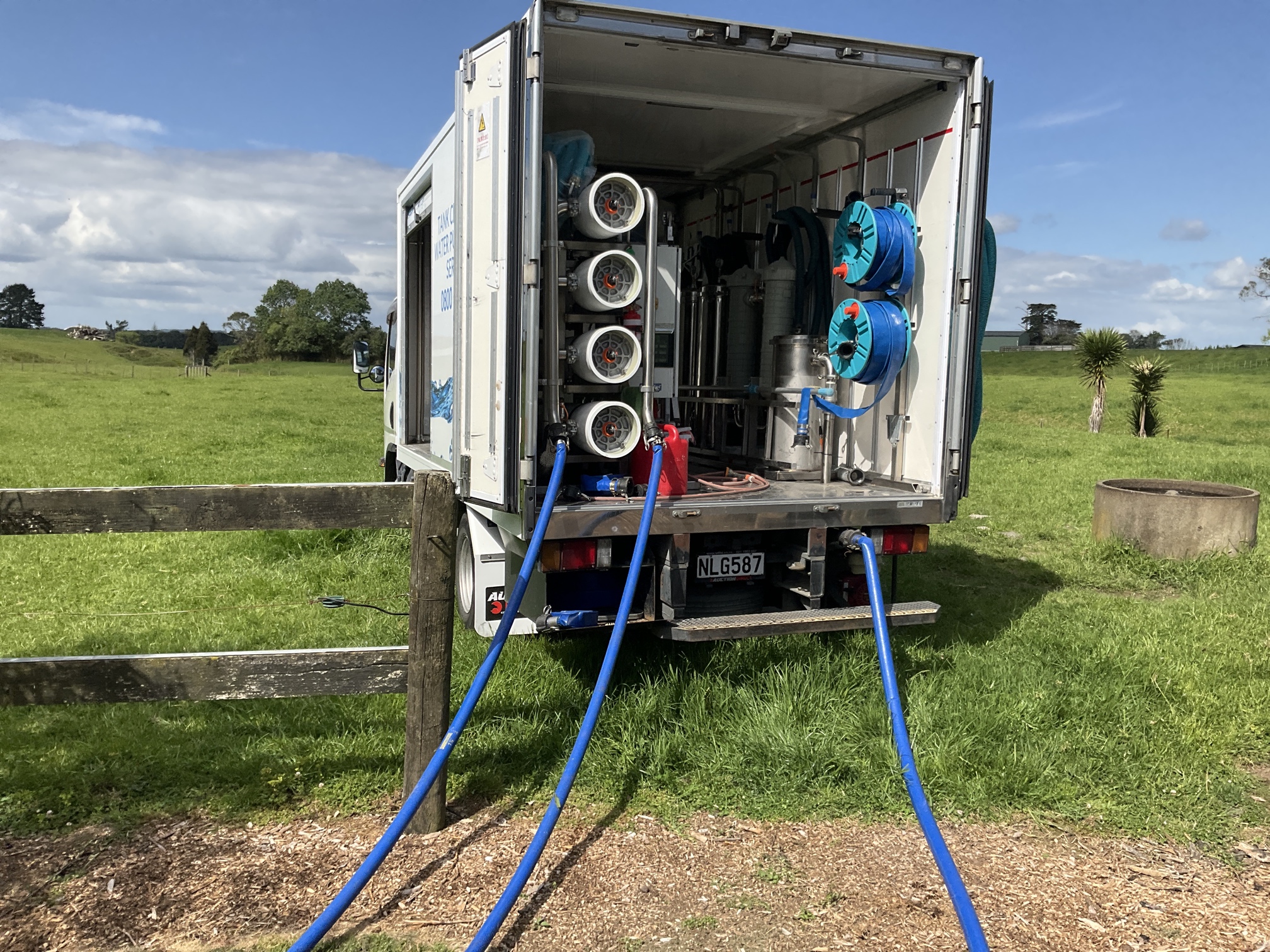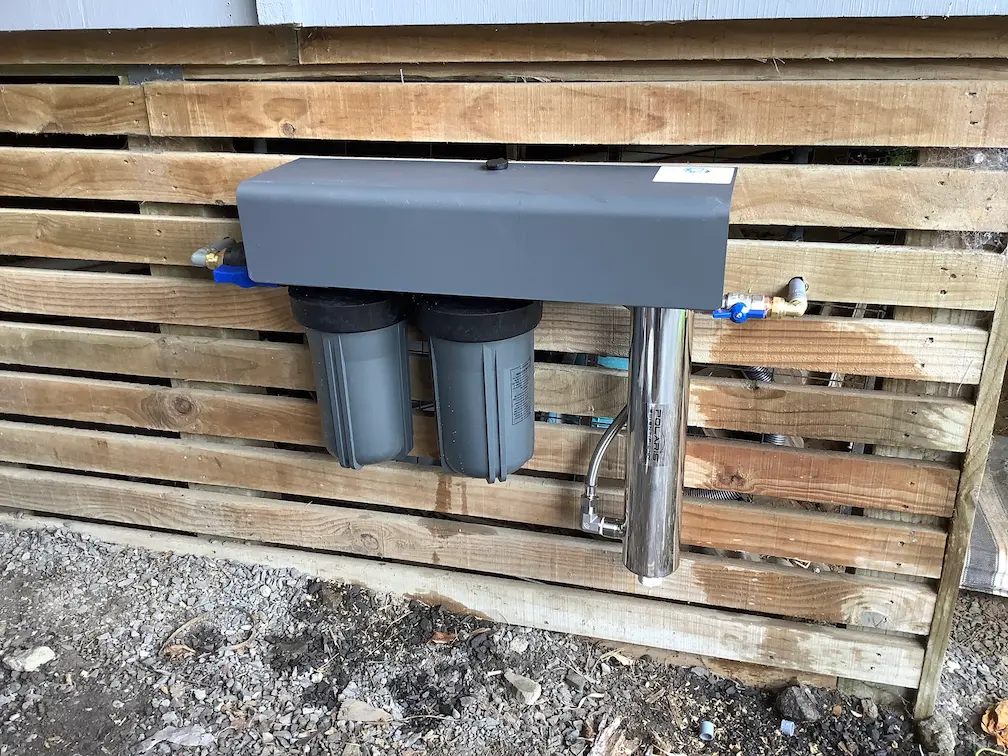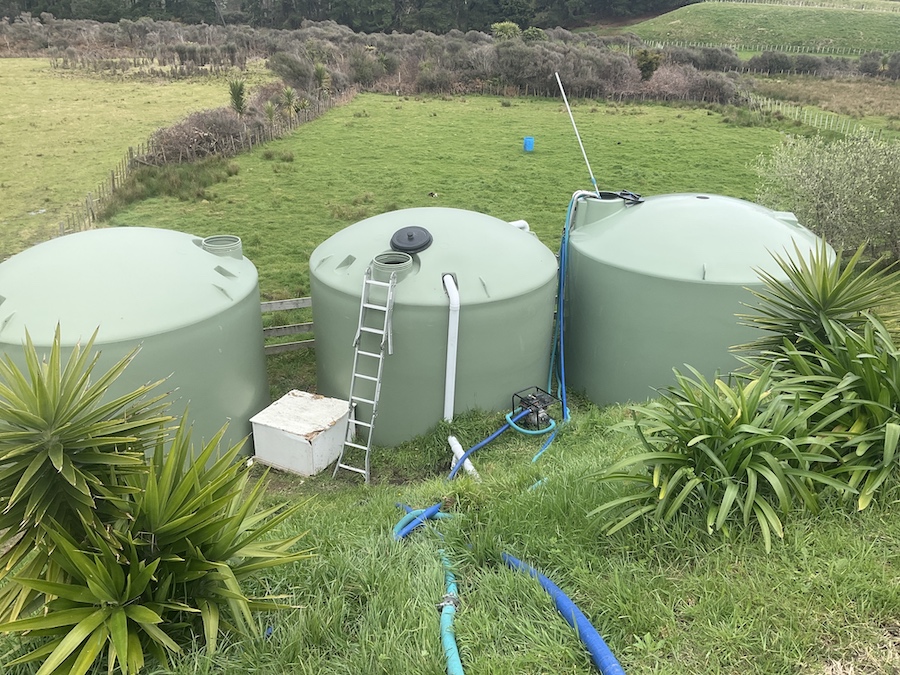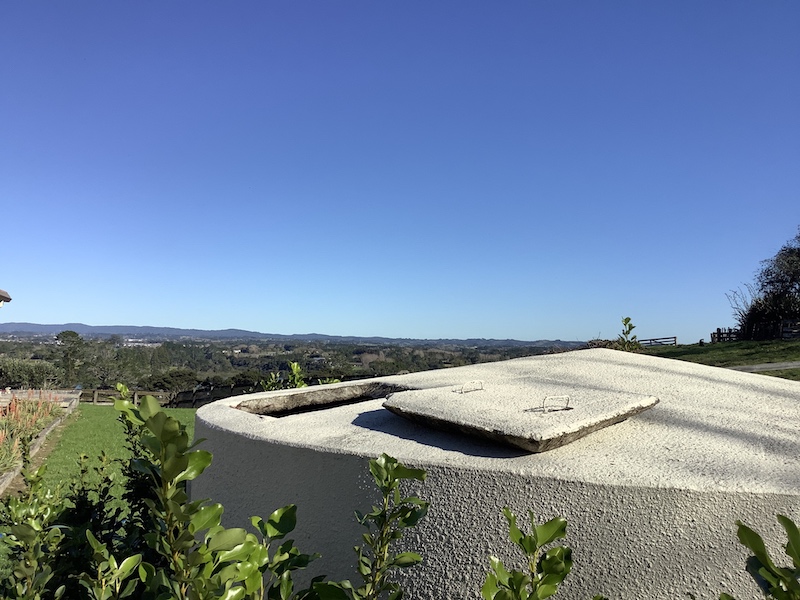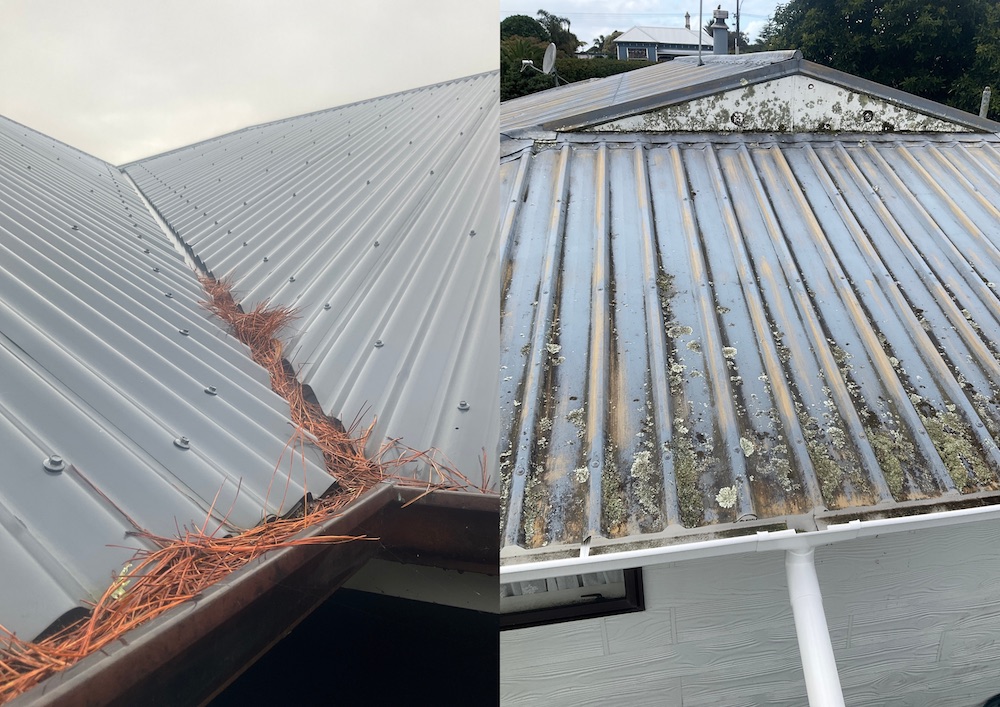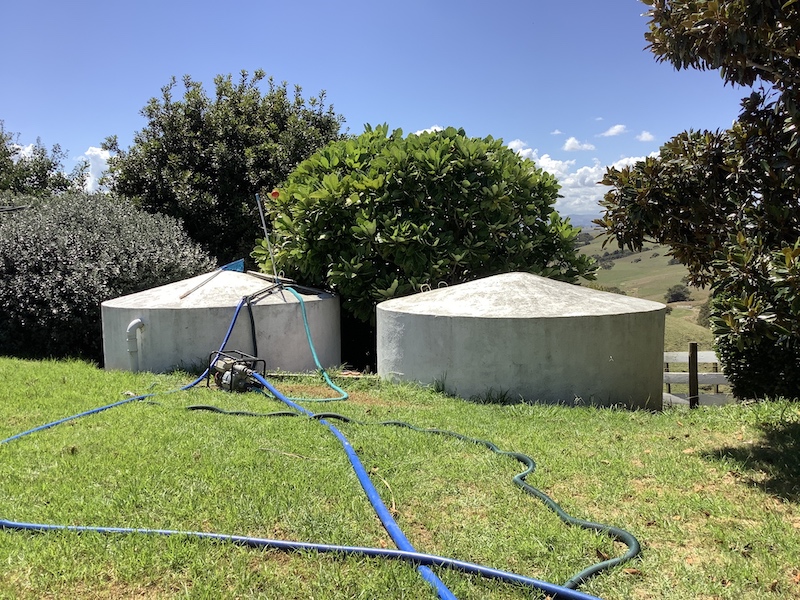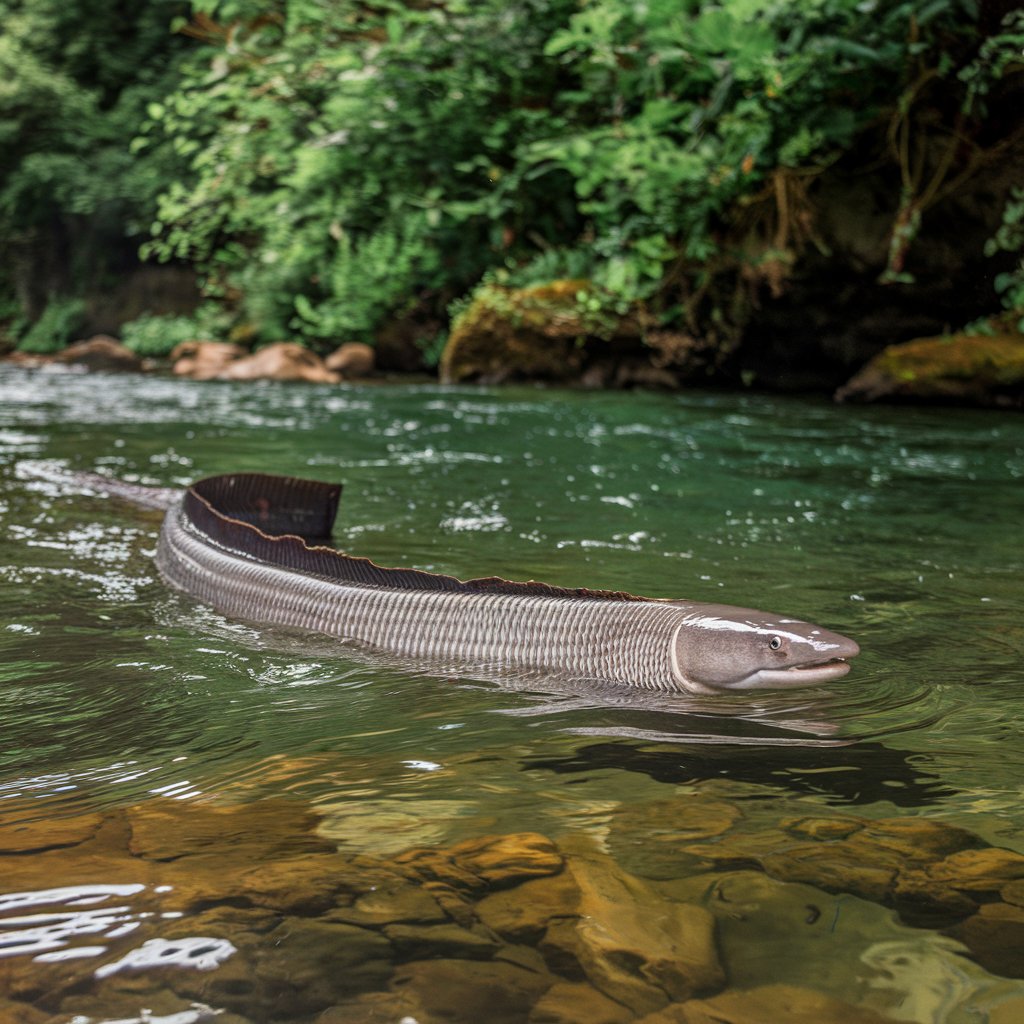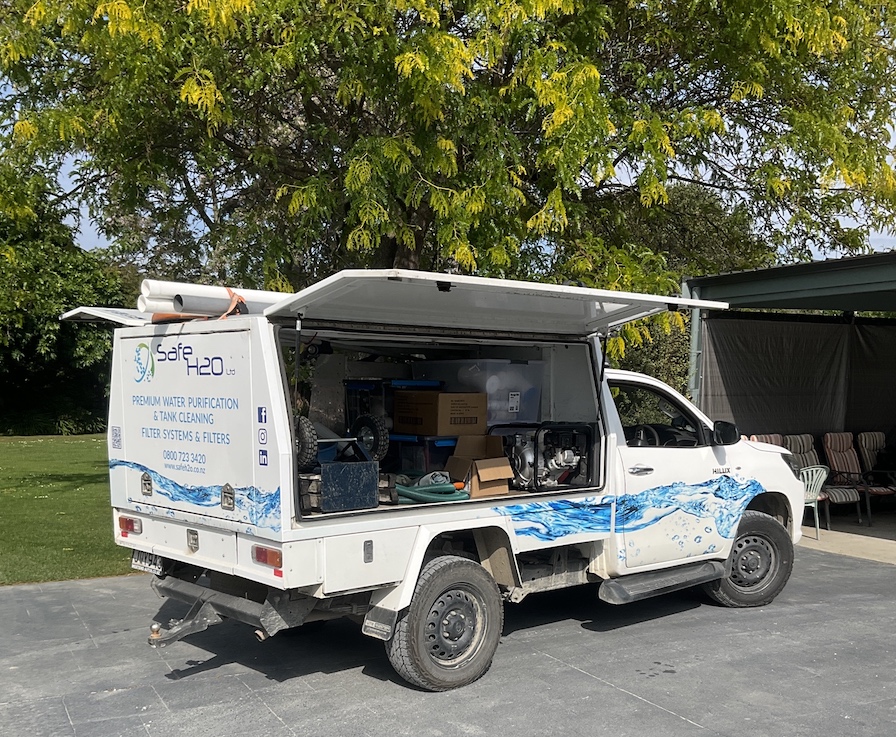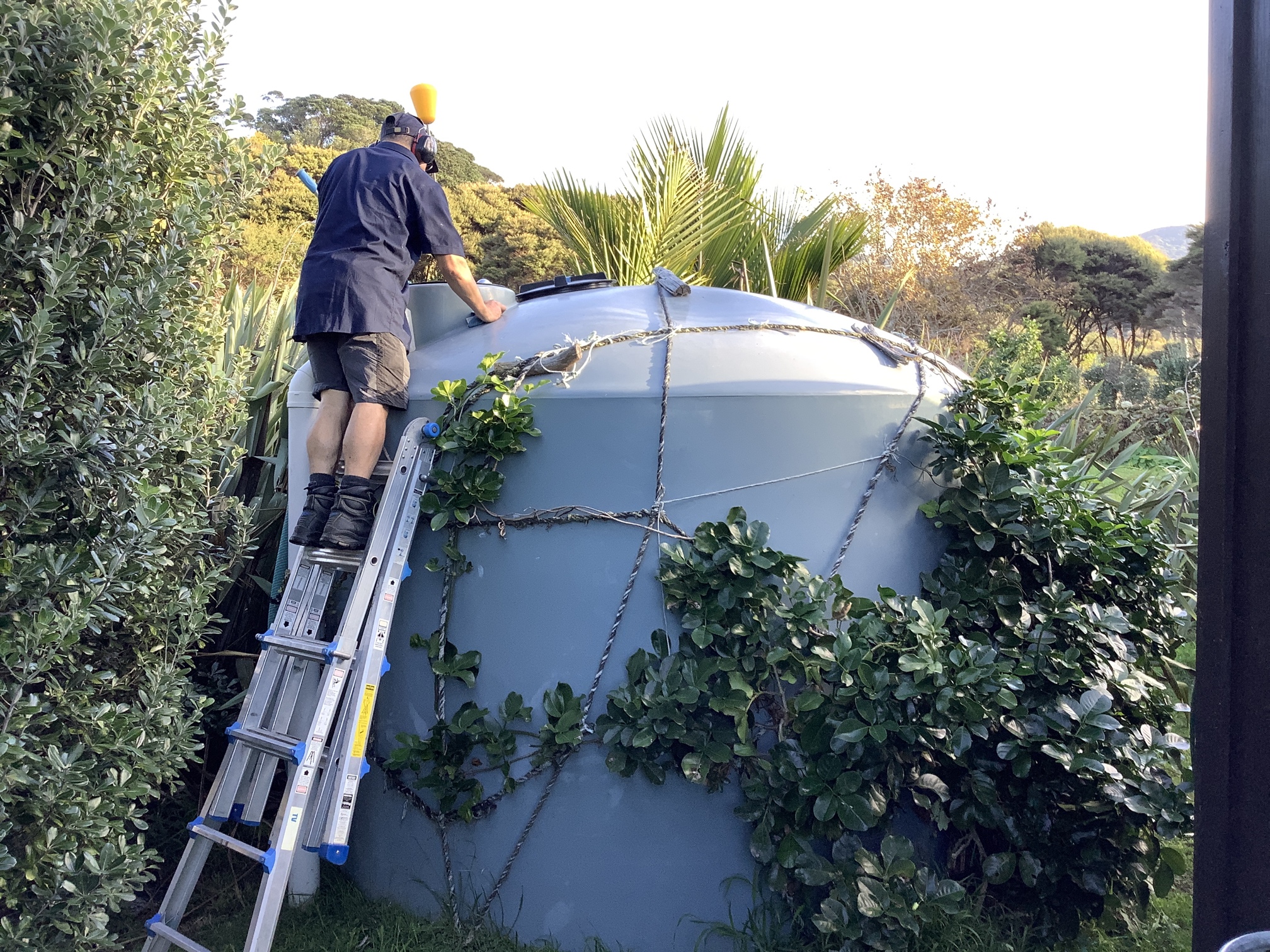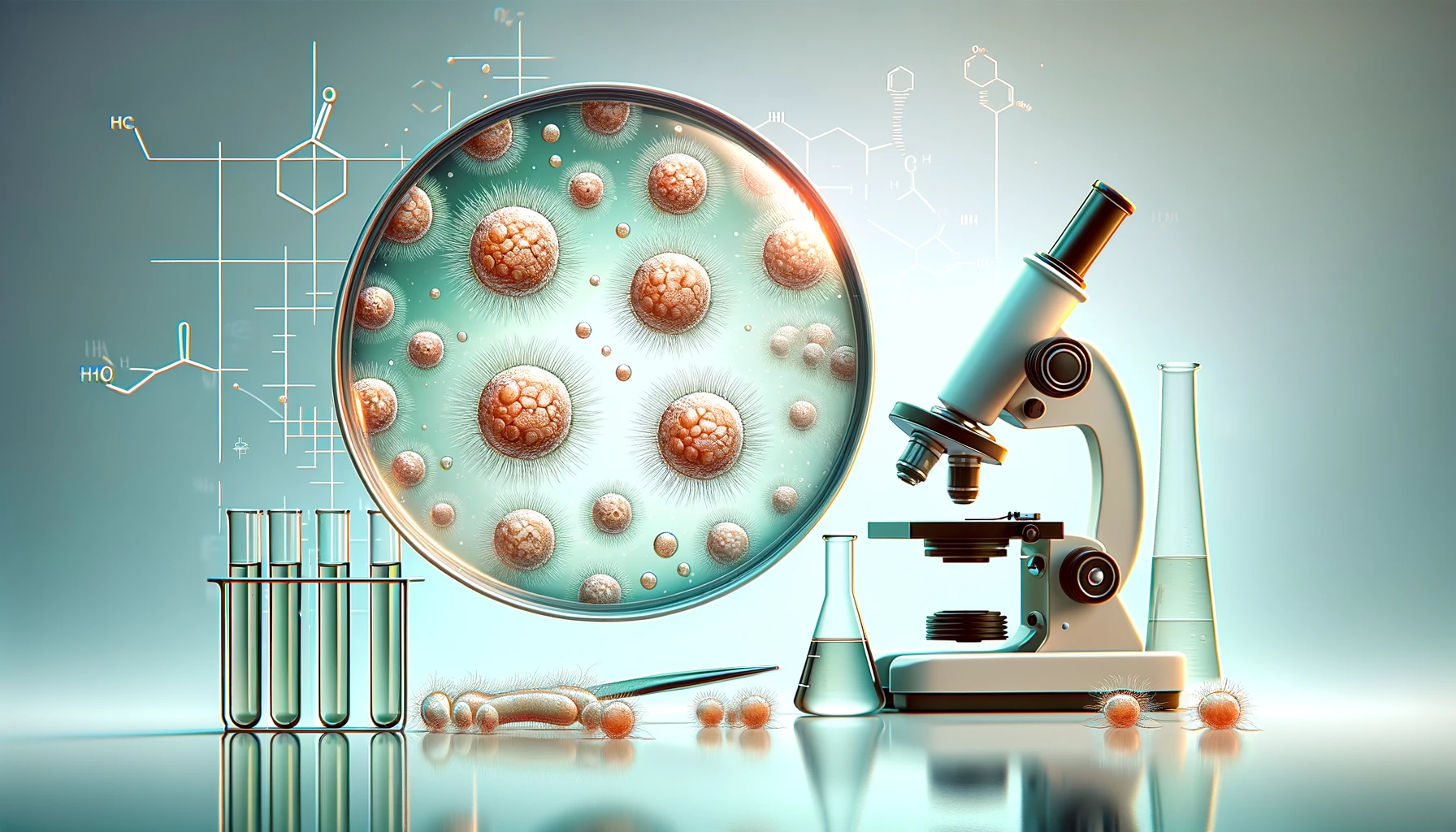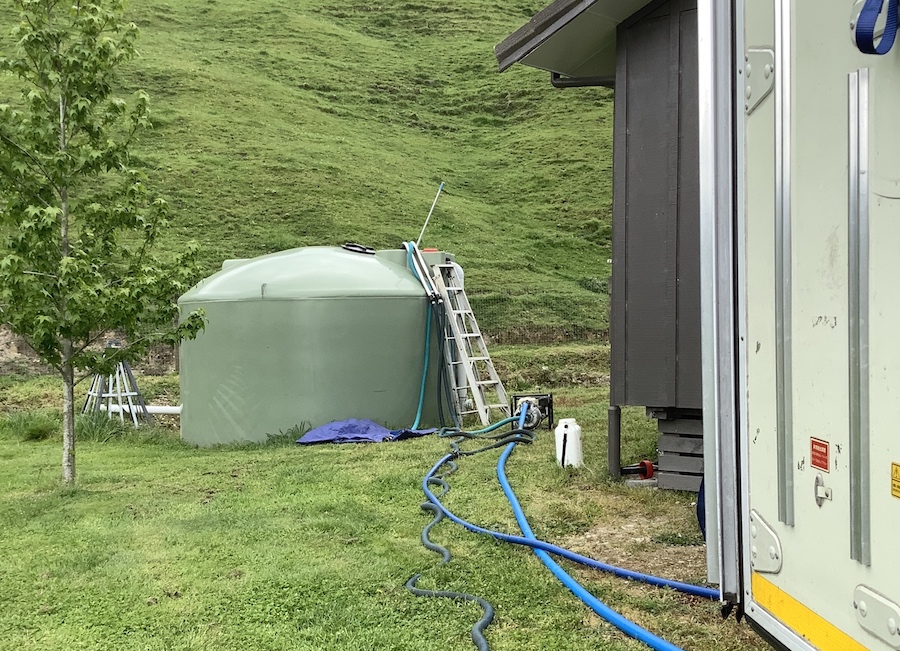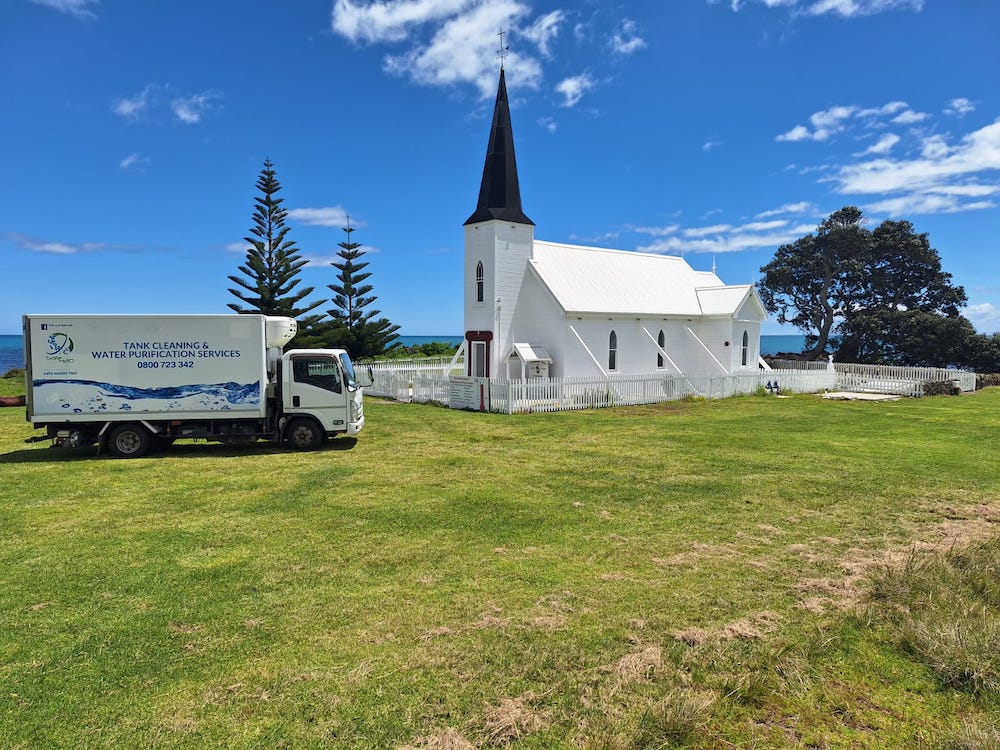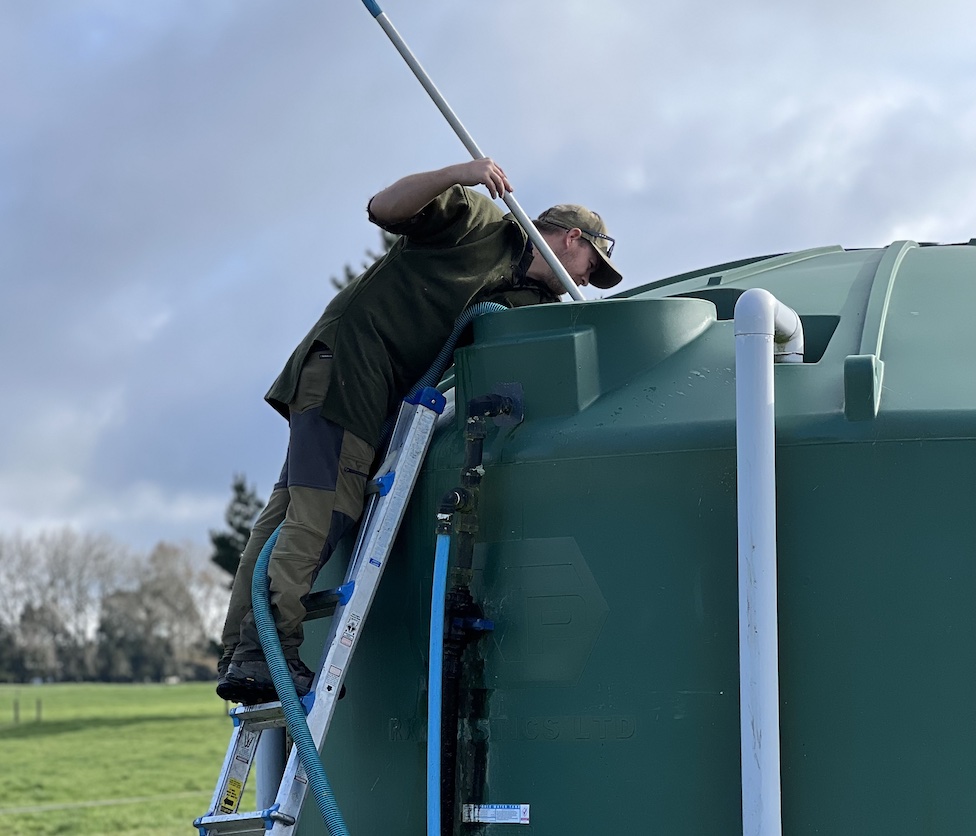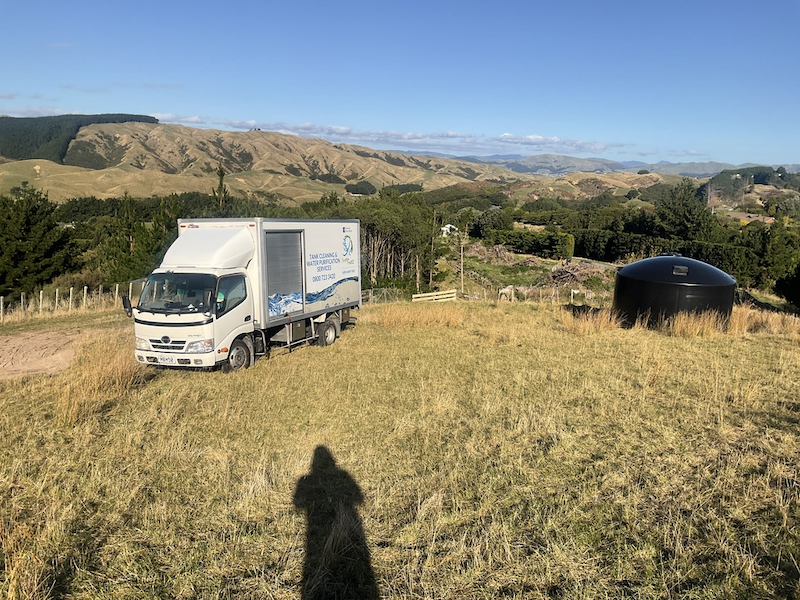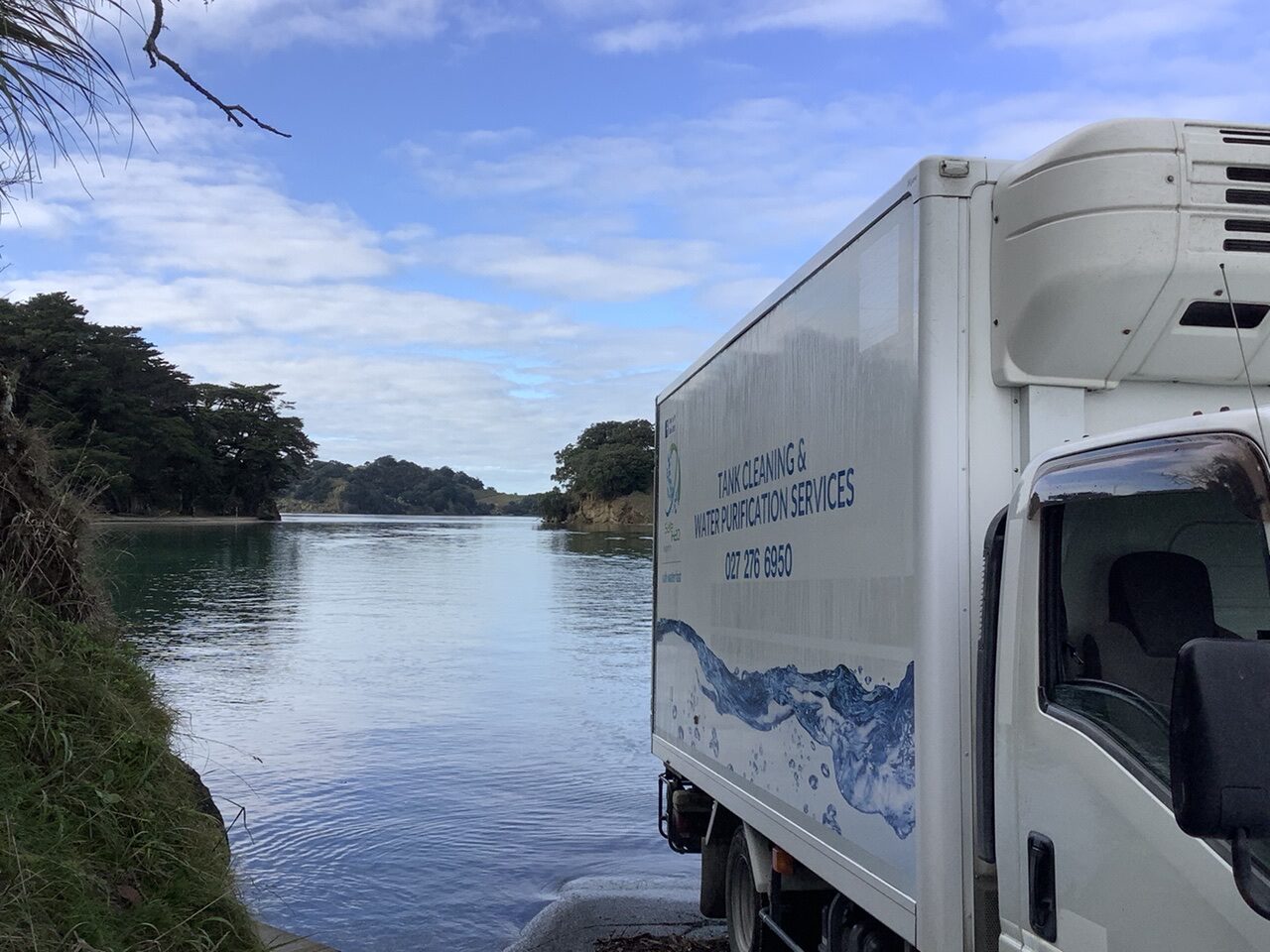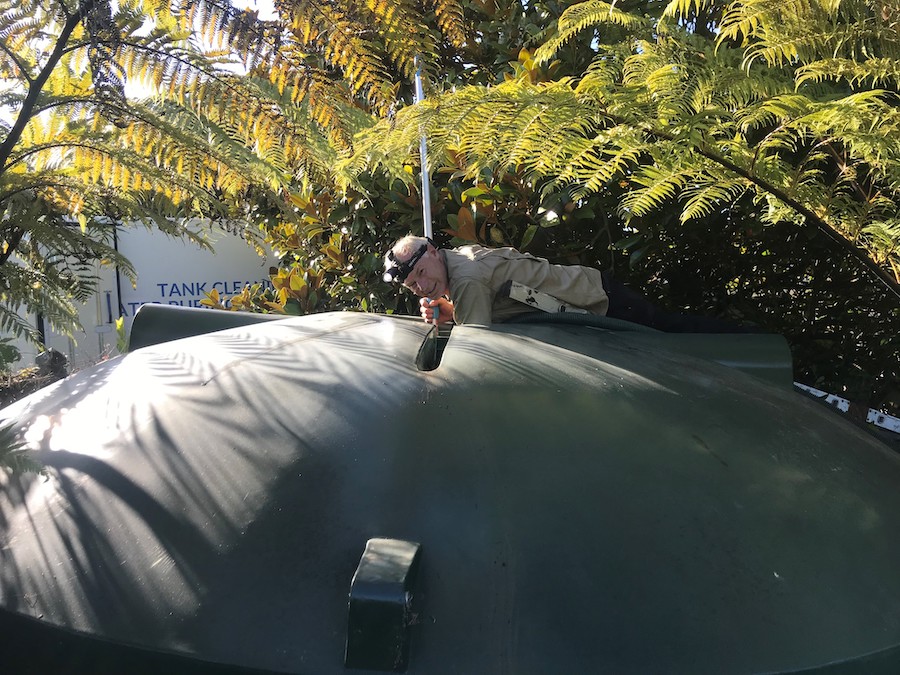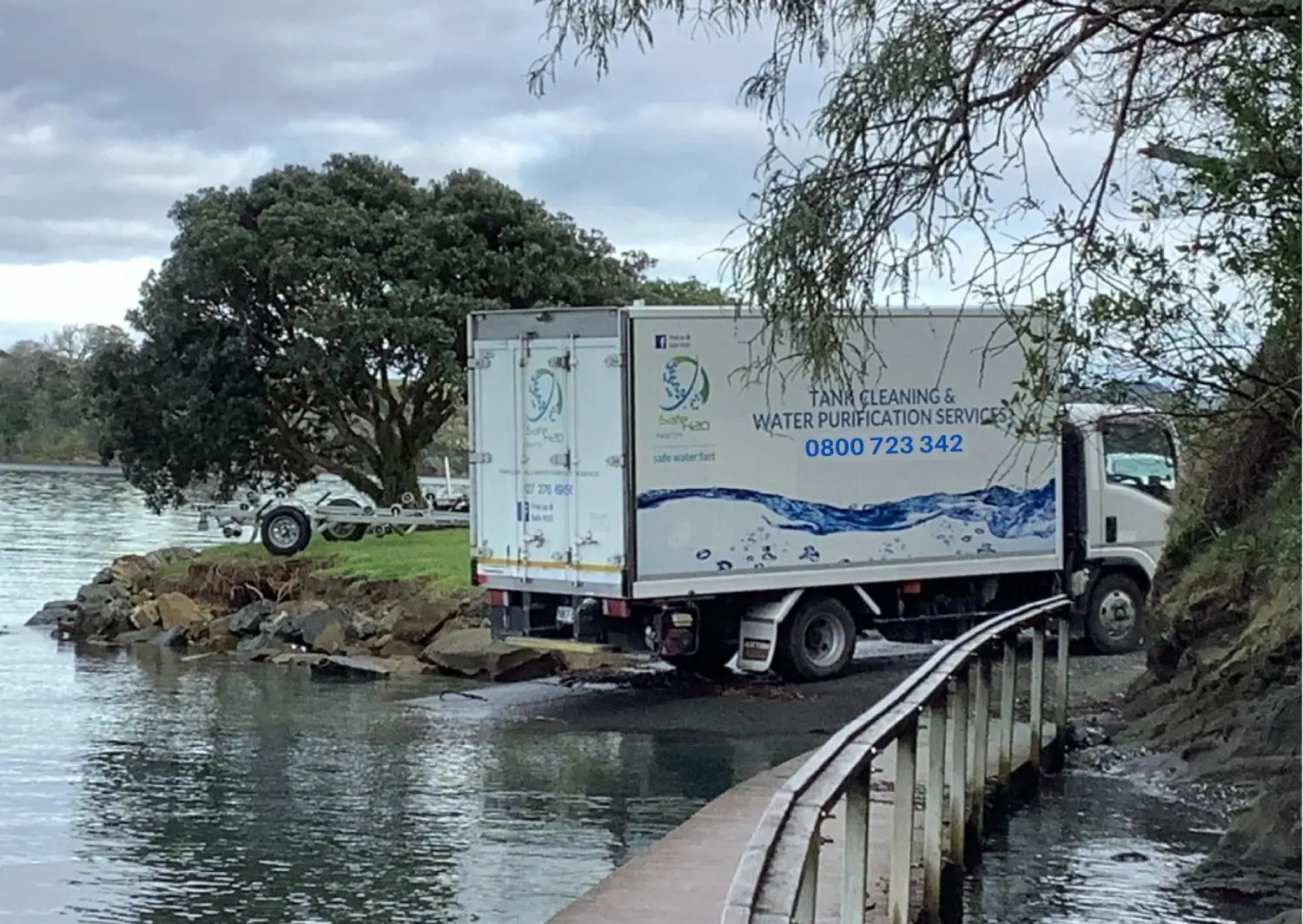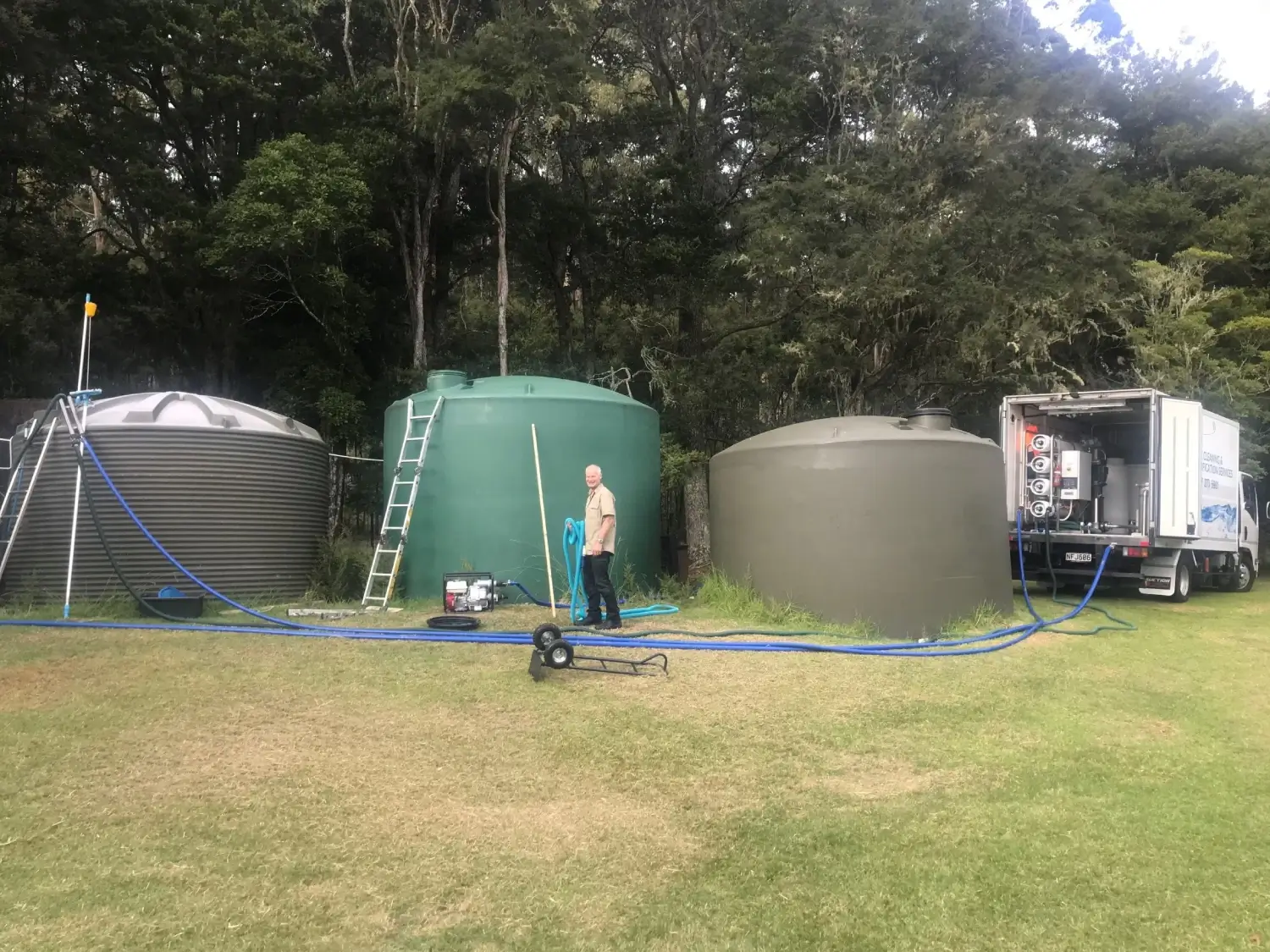Smokey Water: Where Did it Come From, and What to Do Next
There’s nothing better in the colder season than curling up beside a warm, crackling fire, comforted by the smell of wood smoke in the air.
That same smoke, however, is far less charming when it turns up in your drinking water—bringing with it an unpleasant taste and visible sooty residue swirling in your glass. Smoke contamination in your water isn’t just off-putting; it can pose serious health risks if left unaddressed.
Identifying and resolving the source as soon as possible is the best way to keep your household safe and healthy this winter.
Where There’s Smoke, There’s Fire
Smoke, soot, and ash can find their way into your water tank in several ways, with the most common being soot particles settling on your roof and then washing into the tank during rainfall.
Possible sources include:
- Leaks or faults in your chimney or flue
- Soot drifting from a nearby or neighbourhood fire
Smoke can travel surprisingly far before settling. In fact, there have even been instances where water tanks in New Zealand were affected by smoke and ash from bushfires all the way over in Australia.
More Than Meets the Eye
What you can see in your water is bad enough, but what you>can’t see is far more concerning.
Carbon Overload
The main content of soot is likely carbon, which is difficult to remove. However carbon filters help remove the smell and taste from your water, also making it safe for showering.
What Filtration Can’t Fix
Soot can also bring along things that are even more dangerous than carbon. Carcinogens such as arsenic, cadmium, and chromium may be present, and unlike carbon particles, these can’t be filtered out.
Exposure to carcinogens can increase your risk of developing cancer, making their presence in drinking water a serious concern.
Your Action Plan
- Ditch the Dirty Water
Whilst carbon filters may be a short term fix, the potential risks of carcinogens should not be overlooked and need to be addressed promptly. Vacuuming the physical sediment from the tank and discarding the contaminated water, and replacing it with fresh water, is the safest way to ensure your household is left with clean and safe water. - Stay Safe Until the Clean
Until your tank is properly cleaned, use bottled water for drinking and cooking. If you have the option to install a water filter, adding a carbon filter may help reduce smell/taint issues when showering. - Stop It at the Source
To ensure this issue doesn’t arise again, we recommend getting specialist advice on the cause of the contamination. This could include a professional chimney or flue inspection or testing your bore/surface water source if your tank is not rain fed. - Flush Away the Last Traces
Give your roof a good clean, then flush out the downpipes to clear away any lingering soot residue. It’s a good idea to disconnect the downpipes for a little while so nothing washes into your tank.
Wrapping it Up
Keeping your water safe is too important to leave to chance. If you notice smoke, soot, or anything unusual in your tank, act quickly to protect your health and your household. A full clean and fresh refill is the safest solution.
If something’s not right with your water, we’re only a phone call away.
We’re always happy to chat and help you keep it fresh, clean, and safe ✅📞
Concerned about nitrates in your water, and want to know how to get rid of them?
In this blog, we'll explore these frequent water tank problems and provide practical solutions to address them effectively
Smoke and soot can contaminate NZ water tanks. Learn how it happens, the health risks, and Safe H2O’s expert tips for cleaning and prevention.
This comprehensive guide examines the benefits and drawbacks of DIY and professional water tank cleaning, enabling you to make the best choice for your home.
Winter’s cooler weather might not have you thinking about your water tank - but it should.
Whether you’re collecting rainwater, drawing from a bore, or tapping into a stream, your water tank is the heart of your...
Whether you’re collecting rainwater, drawing from a bore, or tapping into a stream, your water tank is the heart of your...
How Possums, Rodents, and Birds Get into Your Water Tank – and How to Keep Them Out When thinking about water quality, …
What’s in Your Water? Common Contaminants in NZ Drinking Water Tanks Whether your water comes from rainfall, a bore or a nearby …
Water Tank Cleaning Myths Debunked When it comes to maintaining clean and safe water in your tank, there can be a bit …
Autumn Water Tank Care Tips: Preparing for the Seasonal Change As the crisp air of autumn rolls in, it’s time to think …
Water Tank Cleaning: A Comparison of Traditional vs. Our Innovative Method When it comes to cleaning your water tank, Safe H2O cleans …
UNDERSTANDING FILTRATION SYSTEMS: WHAT IS SEDIMENT AND UV WATER FILTRATION? Your water source likely contains a myriad of sediments and particles, ranging …
Water Tanks 101: A Beginner’s Guide to Clean, Safe Water for Your Property Water tanks are an essential resource for those on …
What can I do before water enters my tank to help minimise my risks? Spring or surface water (streams) will usually be …
When it comes to maintaining a healthy rainwater fed tank, one of the most overlooked aspects is the cleanliness of your roof and gutters.
Flush Caps, Leaf Diverters, and More: Methods to Help Protect Your Water Supply When it comes to maintaining a clean and safe …
In the realm of curious misconceptions, one fascinating myth suggests that eels clean water tanks. While this idea captures the...
Why having ‘Immunity’ to Bad Tank Water is a Bad Thing When it comes to maintaining a healthy home, clean water is …
Safe H2O Collaborates with Isaac’s Plumbing, Pumping and Electrical Here at Safe H2O, we aim to provide exceptional advice, service, and support …
How Often Do New Zealand Schools Need to Clean Their Water Tanks? Here in NZ, managing water supplies, including water tank maintenance …
What is Cryptosporidium and How to Keep Your Water Safe What is Cryptosporidium? In simple terms, Cryptosporidium is a tiny parasite that …
Why you should use a Water Tank Cleaning Specialist Well maintained water tanks are the backbone of clean water storage and supply …
Guarding Against E. coli: Essential Strategies for Ensuring Safe Water Tank Systems Water tanks are an essential source of clean drinking water …
5 Top Reasons to Keep Your Water Tank Clean in New Zealand Cleaning your water tanks is something that’s probably not always …
Autumn Alert: Why Now is the Perfect Time to Clean Your Water Tank As the autumn leaves are about to fall and …
What are my Legal Obligations for water tank cleaning in New Zealand? Taumata Arowai is the new Water Services Regulator for Aotearoa …
Top signs your water tank needs cleaning – Don’t ignore these red flags Your water tank is a vital component of your …
How Often Should I Clean My Water Tank in New Zealand? If you are one of the thousands of New Zealanders with …
The Risks of Cleaning Your Water Tank with Janola or Household Bleach Should you use Janola to clean your water tank? Here …
12 Ways to Save Your Tank Water Worried about your water tanks running empty? Rainfed tank water is a limited supply and …
How much does it cost to clean my water tank? The cost of cleaning a typical New Zealand water tank depends on …

